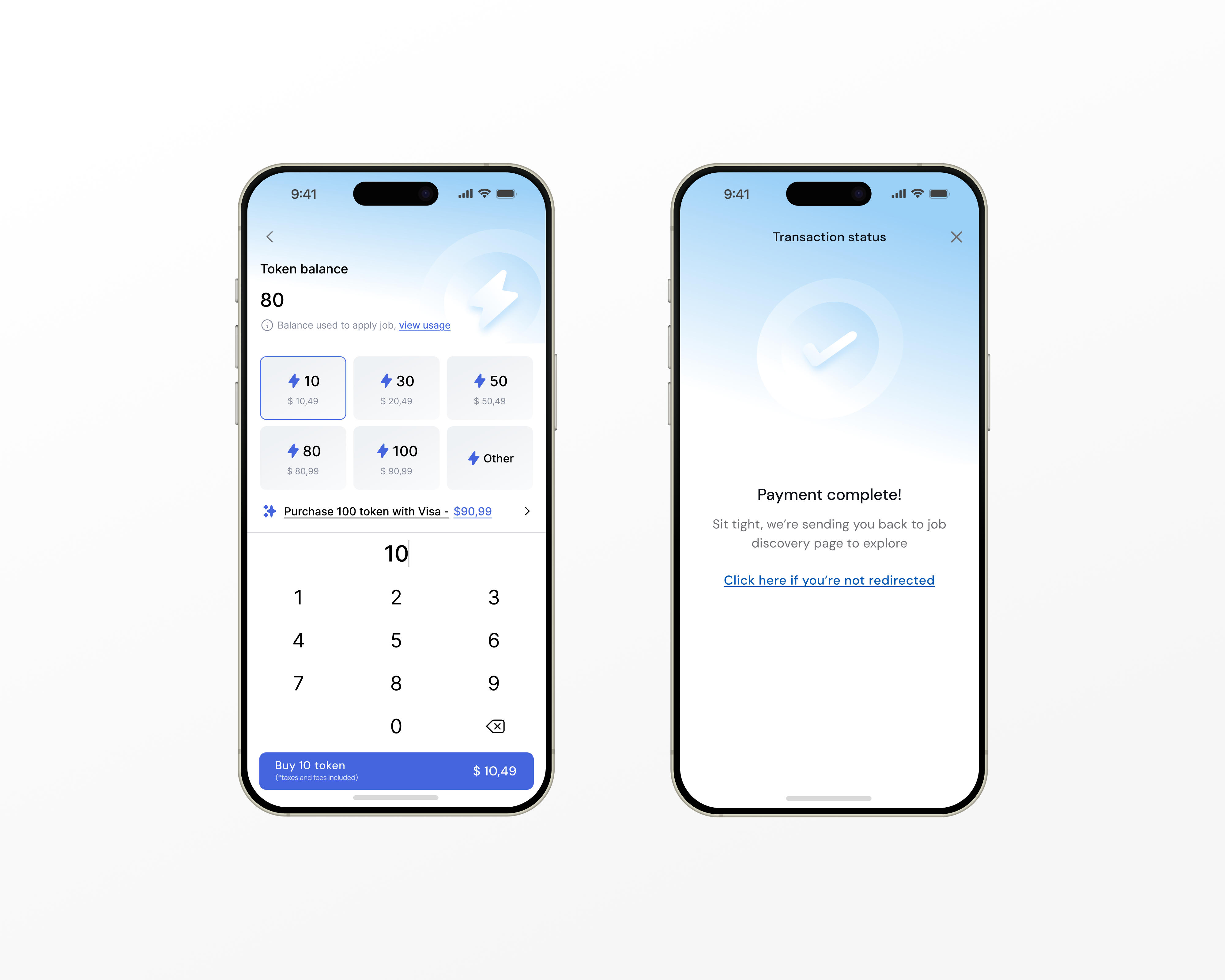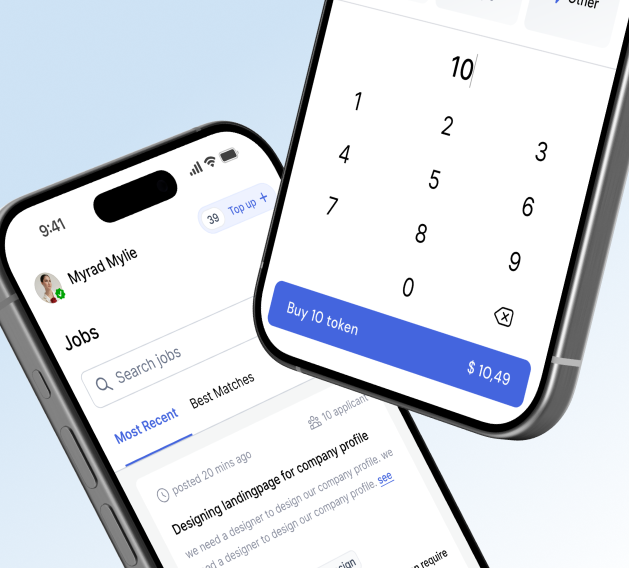
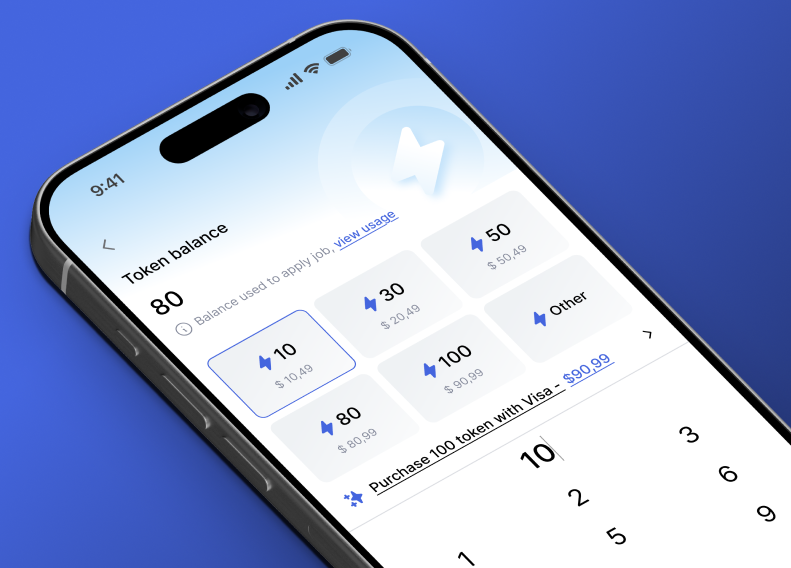
Workd©
Workd is a platform for finding projects, using tokens to apply or pitch.
Scope
Background
This project was initiated based on tracking data from our client’s app, which revealed a significant decline in digital goods purchase rates. Upon further analysis and breaking down the user journey into key stages, we identified that the highest drop-off occurred just before users clicked the top-up button. This led us to hypothesize that users may be experiencing confusion or hesitation when making a purchase decision related to digital goods.
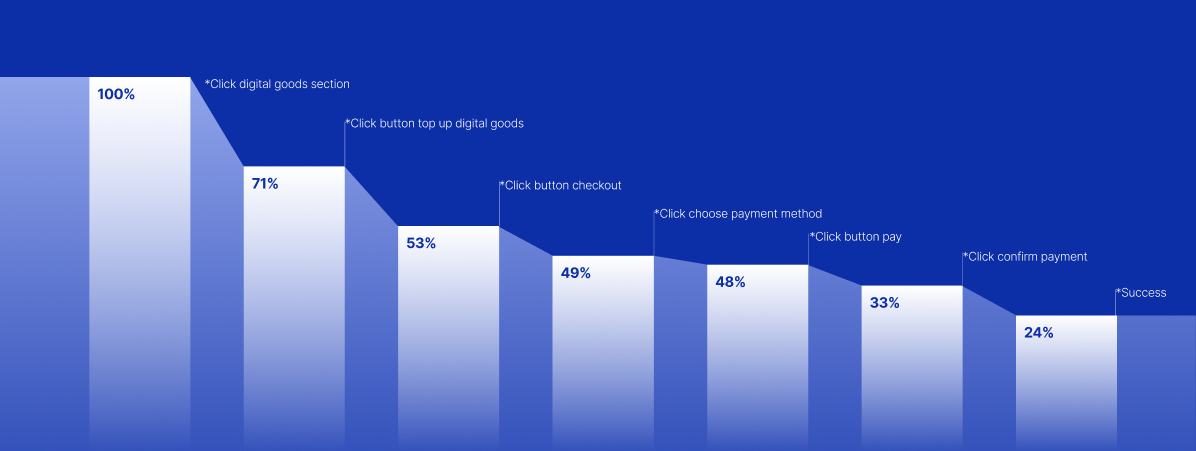
Business goals
The business goals focus on reducing churn in digital goods (token) purchases by resolving key drop-off points in the flow. We aim to drive repurchase through personalized offers, seamless checkout, and by building trust with transparent pricing, reliable payments, and clear communication, ultimately increasing customer lifetime value.
Problem solving process
To achieve these business goals and address the challenges we face, we have broken them down into several key processes:
1. Listen and learn from surveys
2. Decide what should be improved
3. Create solutions through design
1. Listen and learn from survey
To validate our hypothesis, we will conduct an exit survey via an in-app prompt. A small pop-up will appear asking: ‘What prevented you from completing your top-up?’

After several failed transactions and completed exit surveys, we consolidated the feedback provided by users.
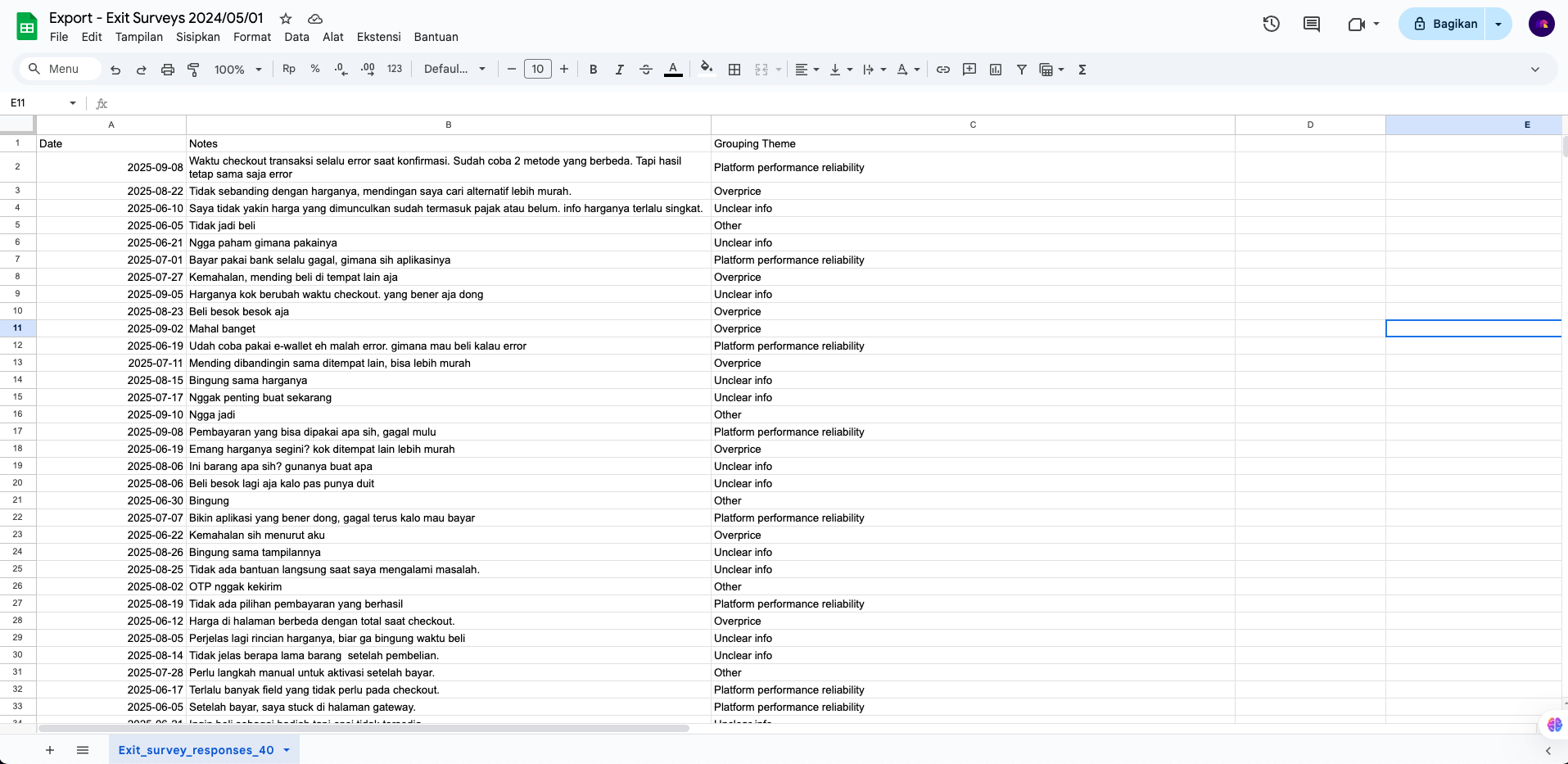
I categorized similar responses into key themes (e.g., platform issues, pricing, unclear information, others) and quantified the frequency of each theme to identify the most common pain points.

I found that the two most frequently mentioned pain points were platform reliability issues and unclear information.
2. Decide what should be improved
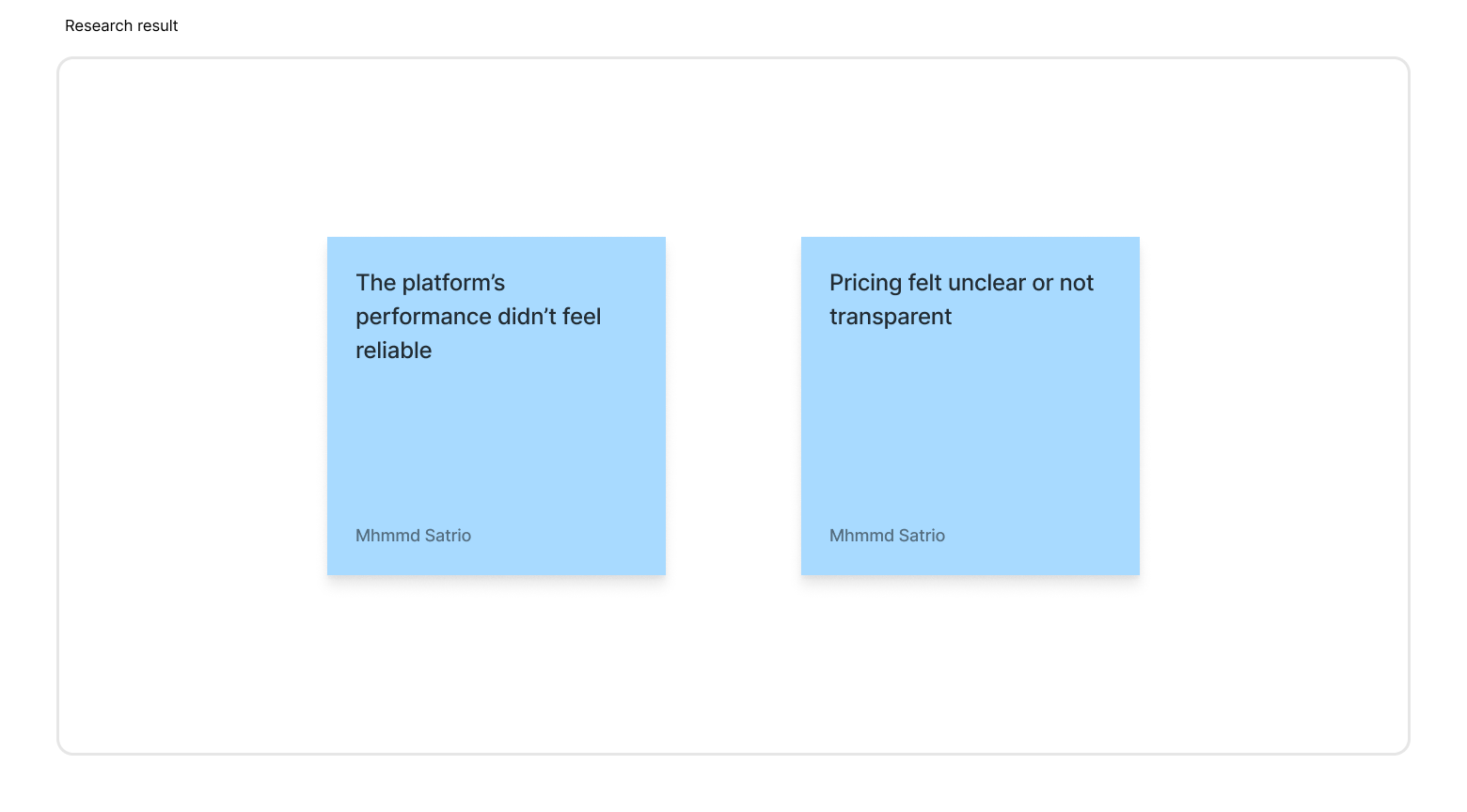
From my research, I found that several factors stop users from completing their purchases. The two most common are platform reliability and price transparency. That’s why I’m focusing on these areas as my main priorities for improvement.
Ideation
Based on the two key issues mentioned earlier, I will focus on delivering clear and transparent information through UX design, while the reliability aspect will be addressed by the engineering team.
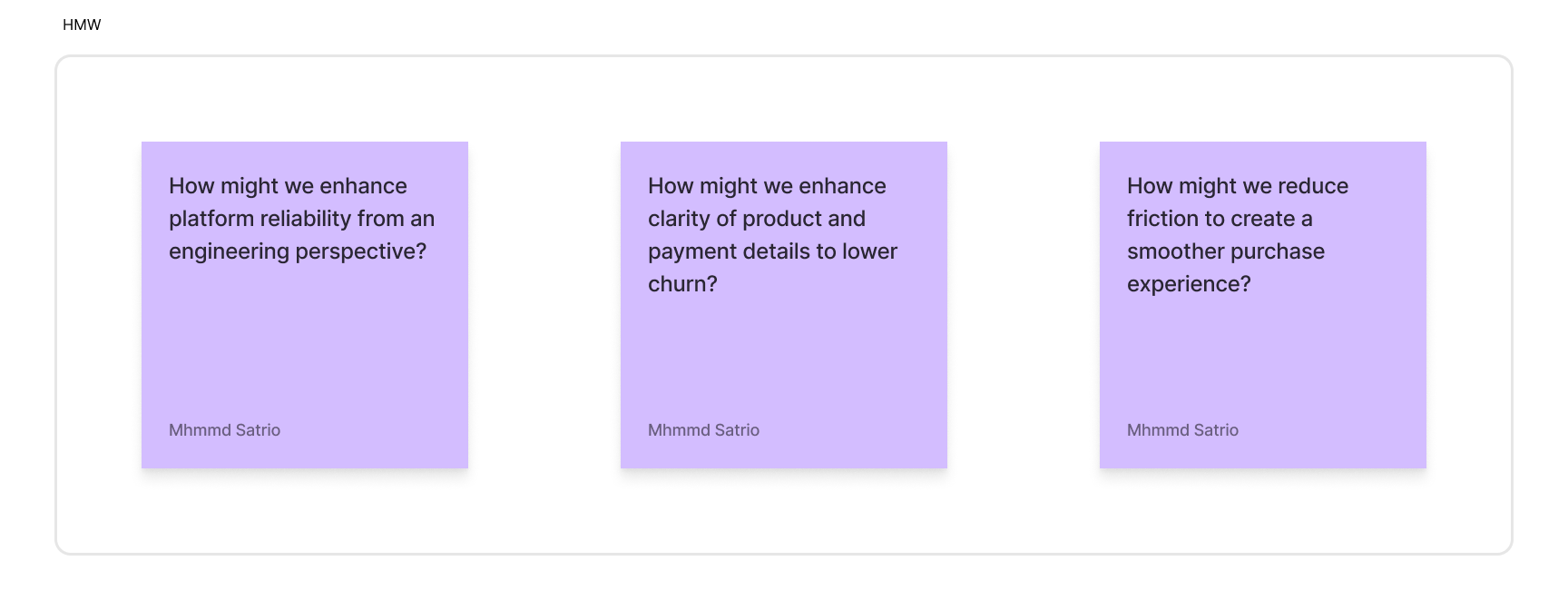
To make the process more concrete and allow me to work through the case in detail, I translated the ‘How Might We’ questions into user stories to serve as a reference for building design solutions.

3. Start designing a solution
Starting from the existing flow, I broke it down into specific details for each step. This approach helps me identify which parts or information can be improved to make the process more transparent and complete.

After some consideration, I’ve updated the version of the existing flow as follows.

Ensuring transparancy by providing complete transaction detail
To achieve this, I worked from the flow breakdown to create wireframes, allowing me to quickly visualize abstract concepts and easily add components if something was missing.
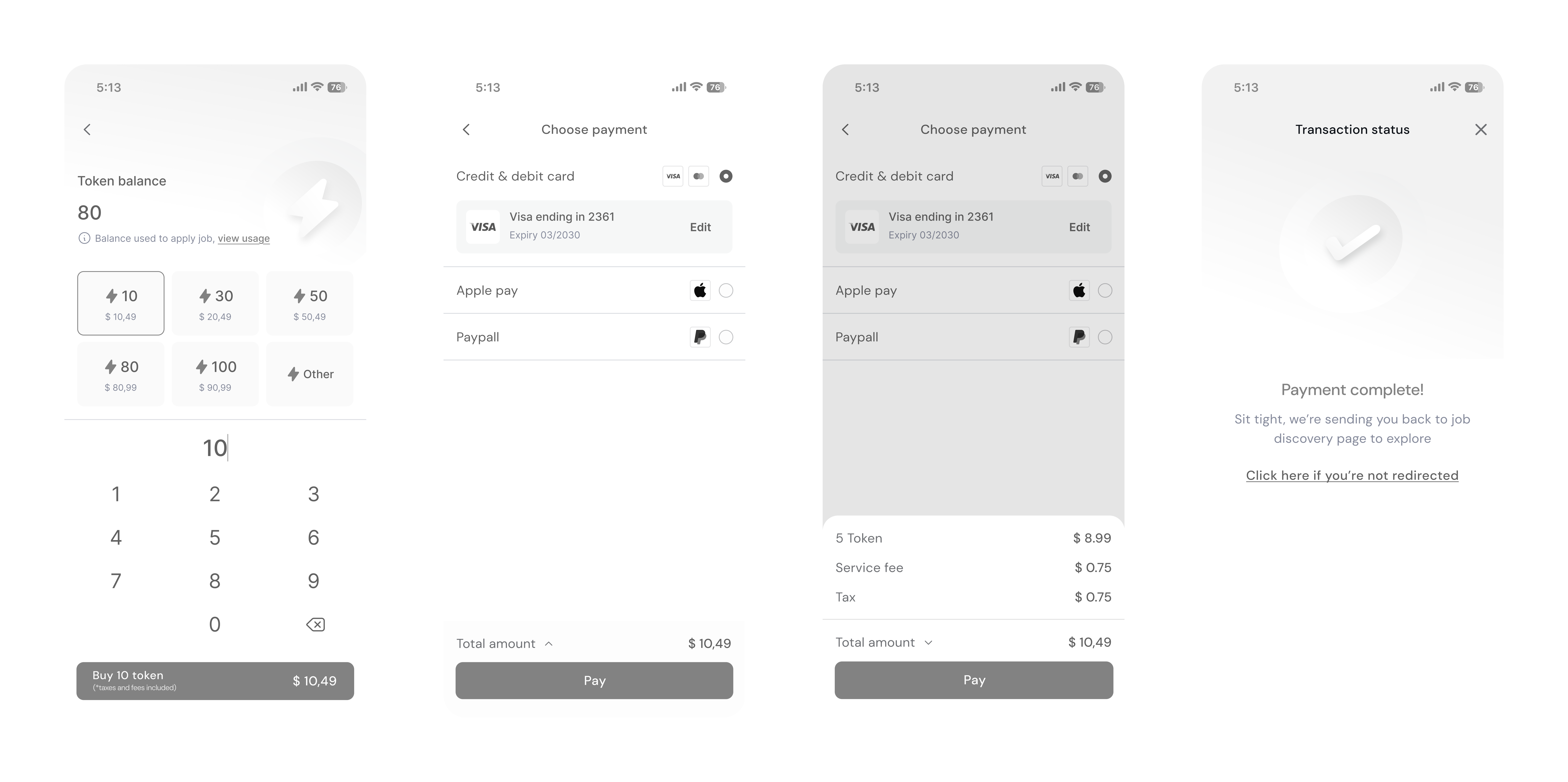
After ensuring the design aligned with the improved flow requirements, I transformed the wireframes into high-fidelity designs. Here are the before-and-after results.
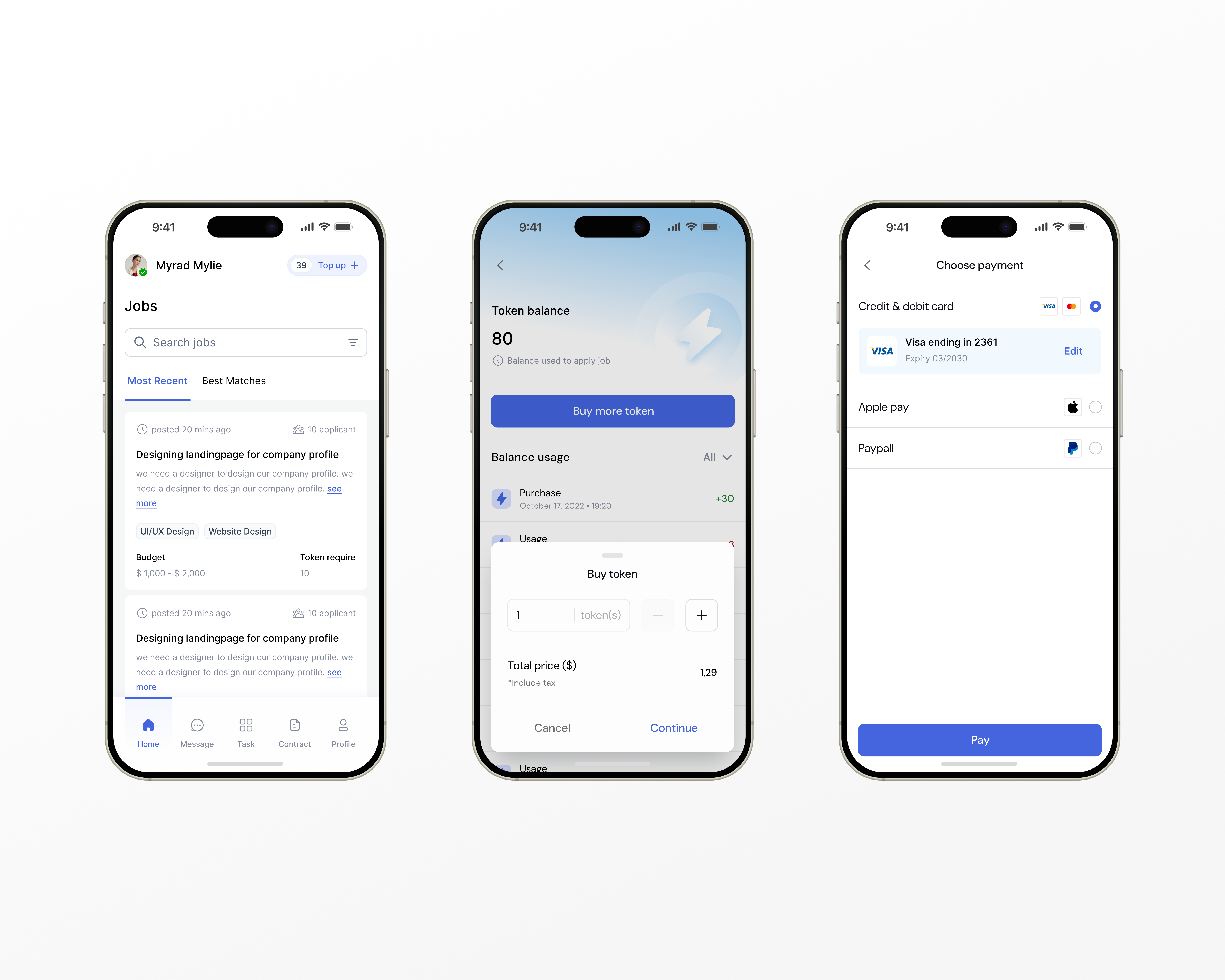
After

Optimizing product bundling and driving repeat purchase
Following the flow, I applied the same process as before, starting with wireframes and progressing to high-fidelity screens to achieve the goal.
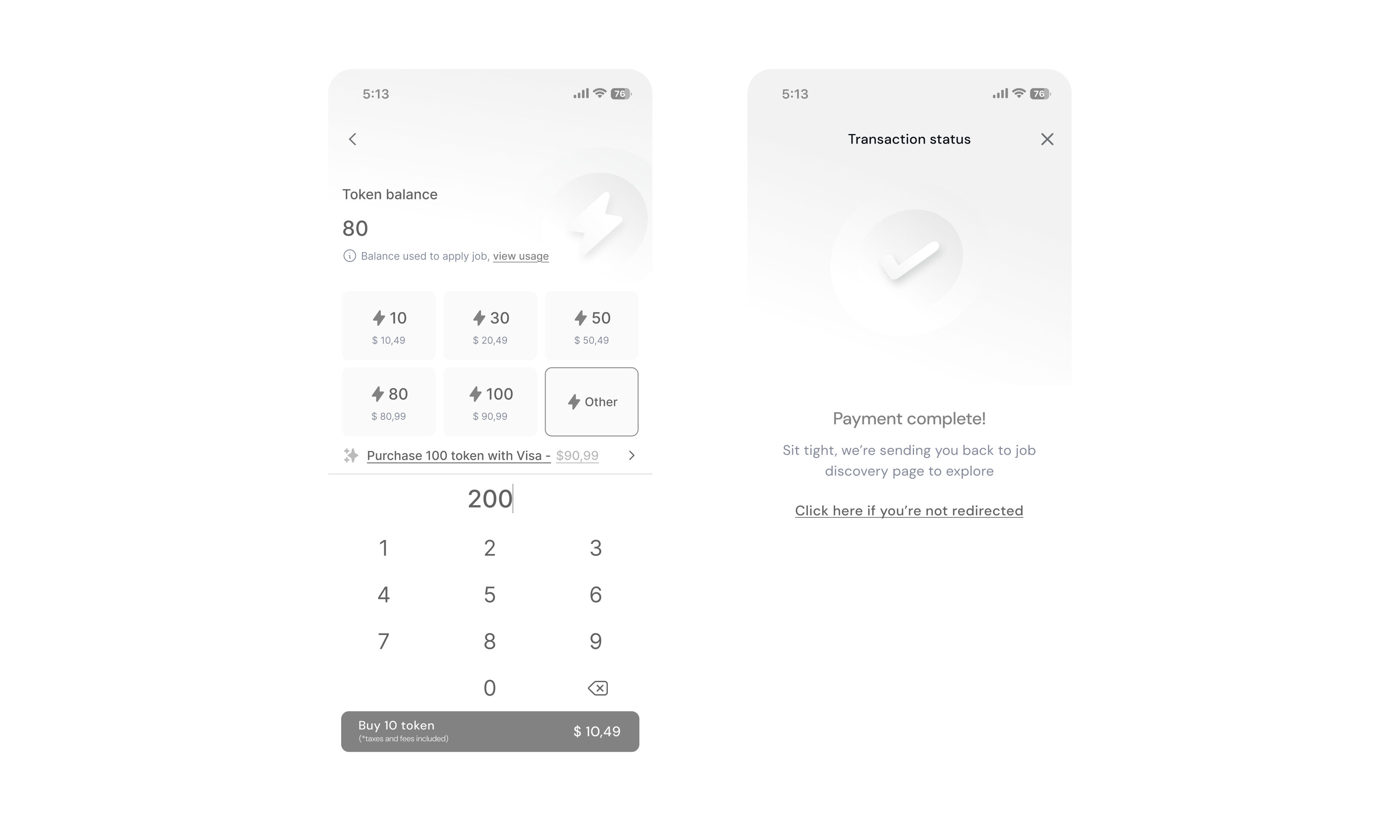
After ensuring the design aligned with the improved flow requirements, I transformed the wireframes into high-fidelity designs. Here are the before-and-after results.
